- Guides
- B2B
-
Climbs
-
Climb Elbrus
- Elbrus individually
- Elbrus from the South, 9 days
- Elbrus from the South, 7 days
- Elbrus from the South in 1 day
- Elbrus from the North
- Elbrus Two Summits
- Elbrus Traverse South to North
- Elbrus Traverse North to South
- Elbrus "Cross" from South
- Elbrus "Cross" from North
- Kazbek+Elbrus
- Elbrus from the West
- Elbrus by helicopter
- Elbrus holidays, 9 days
- Elbrus holidays, 7 days
- Tinder Tour: Climbing Mount Elbrus
- Climb Elbrus from the South, 9 days with Sergey Baranov
- Under 5000 m
- 5000+ meters
- 6000+ meters
- 7000+ meters
- 8000+ meters
-
Climb Elbrus
-
Trekking
-
See 8000m
- K2 base camp
- Everest base camp
- Everest base camp via Gokyo
- Everest base camp in a week
- Annapurna circuit
- Trekking the Manaslu Circuit
- Trekking to Kanchenjunga Base Camp
- Trekking to Kanchenjunga Base Camp (Short)
- Trekking to Kanchenjunga Base Camp (India)
- Trekking to Makalu Base Camp
- Trekking to Annapurna BC
- South America
- Asia
- Africa
- Russia
- Europe
-
See 8000m
-
Adventures
-
Africa
- Tour to Morocco for New Year
- Morocco: Toubkal and the mysteries of the Sahara
- Tour to Eritrea: Dahlak Archipelago and Rashaida Nomads
- Tour to Rwanda: Mountain Gorillas and Mount Bisoke
- Ethiopia
- Tour to Uganda: Queen Elizabeth National Park and Mountain Gorillas
- Safari Tanzania
- Safari Uganda
- Tour to Zimbabwe and South Africa: Victoria Falls, Cape Town, and Cape of Good Hope
- Namibia
- Safari Kenya
- Tour to Botswana: Okavango Delta and Chobe National Park
- South America
- Asia
-
Africa
- Ski-touring
- VIP
- Useful
- About
Climb Aconcagua, 17 days
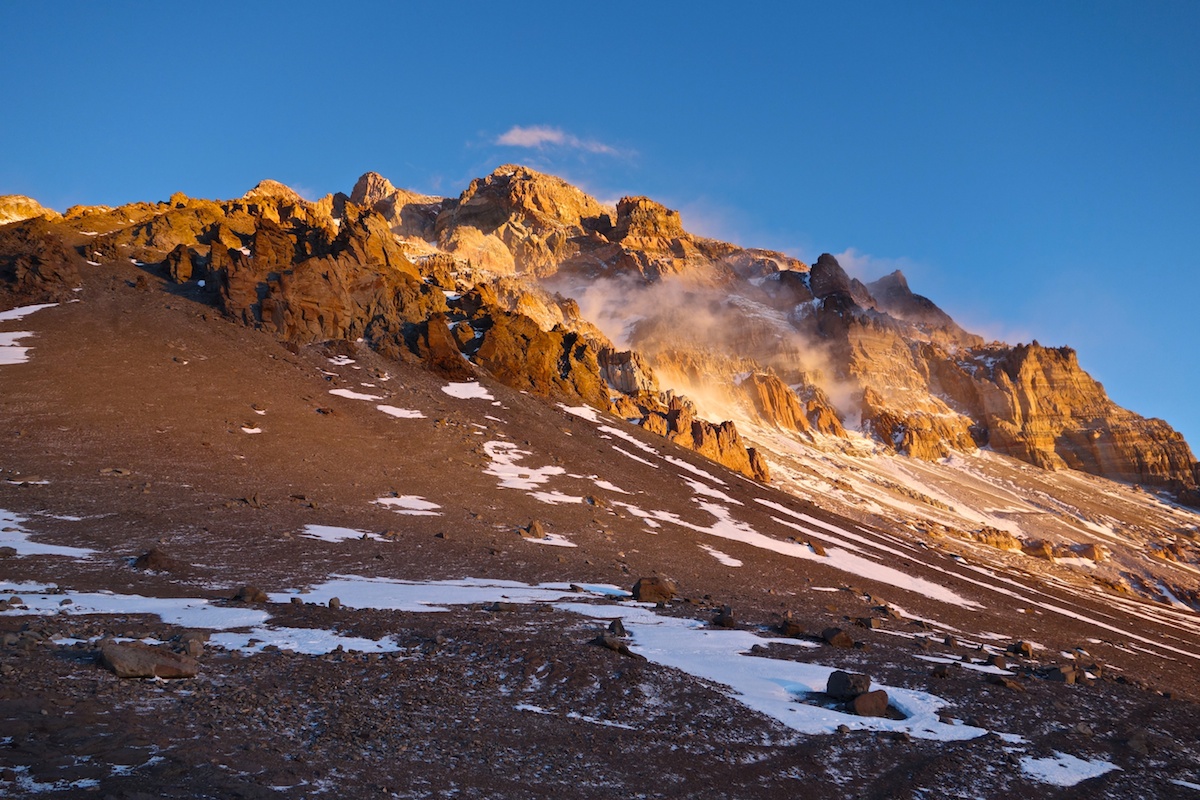
- Height (m)
- 6957
- Duration
- 17 days
- Difficulty
- Moderate
- Continent
- South America
- Children
- From 14 years old
- Accomodation
- There are tents
6650 $
Why to go with us?
Aconcagua ascent in 17 days is quite simple. It is the longest acclimatization program for Aconcagua you can find, that virtually guarantees you ascent despite the altitude and weather. This program is a great preparational step before the "real" seventhousander. There is no ice on the route, no overnight stays in the snow, no difficult terrain. However, you can fully experience the rarefied air on 7000 meters. The route is quite short compared to most other mountains. Height is typed fast, the descent is quite simple and pleasant.
НаверхAbout the tour
The Aconcagua expedition begins in the resort city of Mendoza, also known as the grape capital of Argentina. This city is located at an altitude of 800 metres above sea level. On arrival in Mendoza, the expedition will have a night’s rest. The next day we’ll walk up to the nearest hotel to the National Park, Puente del Inca (2700 metres above sea level). The next morning, we’ll be taken to the entrance of the Aconcagua National Park, from where we’ll start the first part of our expedition on foot.
Park, from where we’ll start the first part of our expedition on foot.The first crossing to Camp Confluence (3300m) is quite easy and takes only three to four hours (some participants even take 1.5 hours!). At Confluence, the group will stay for two nights to acclimatise. On the rest day, we’ll climb to Plaza France (4100 metres). Then the group will go to the base camp Plaza de Mulas (4450m), which is the start of the classic route to climb Aconcagua on the Northwest Ridge. The transition will take between 7 and 8 hours.
After the transition we’ll have a rest day in the base camp, gaining strength for the first acclimatization. We will establish several camps – Plaza Canada (5000m altitude), Nido de Kodores ( “Nest of condors”, 5600m) and already in the second way – assault camp in the village of “Berlin” (6000 m). Climbing to the summit of Aconcagua is planned for the 12-14th day depending on the weather and participants well-being.
After the ascent we descend to the base camp and celebrate the success of the expedition. During one quite a long day we will walk the entire track and already in the evening will be in Mendoza with a hot shower and delicious steaks. There are more than a thousand wineries in the city. Alpinists can participate in fine wines tasting and buy the drinks they liked.
Guided Aconcagua Climbing Program (17 days).
Day 1. Arrival in Mendoza. Transfer to the hotel. Introductory walks around the city, equipment check. Dinner and instructing the group. Overnight at the hotel.
Day 2. Transfer to Penitentes (2700m), sending the main mules to the base camp. Transfer to the entrance of the National Park (Laguna Horcones) and continue to the confluence (3300m, 2-3 hours). Setting up the camp.
Day 3. Acclimatisation radial walk to Plaza de Francia (4200m), with views of the south wall (2700m). 4-5 hours. Return to camp.
Day 4. Long walk (8-9 hours) to the main base camp Plaza de Mulas (4350m). The path follows the wide valley of Playa Ancha. Setting up the camp.
Day 5. Rest at Plaza de Mulas (4350m). Short ascent to the Orkones glacier. Camp.
Day 6. Trek from Plaza de Mulas to Camp-1 (Plaza Canada, 5000m). Setting up the camp. Overnight in the tent.
Day 7. Trek from Plaza Canada to Camp 2 (Nido de Condores, 5600m), camp. Overnight in the tent.
Day 8. Ascent to Cholera camp (6000m), descent to Plaza de Mulas (4350m).
Day 9. Rest day at Plaza de Mulas (4350m).
Day 10. Climb from Plaza de Mulas (4350m) to Nido de Condores (5600m).
Day 11. Climb from Nido de Condores (5400m) to camp 3 (Cholera, 6000m).
Day 12. Climb to the summit of Aconcagua (6957m), descent to camp 3 (6000m).
Day 13. Reserve day in case of bad weather.
Day 14. Reserve day in case of bad weather.
Day 15. Descent to the Plaza de Mulas base camp. Overnight stay in the tent.
Day 16. Trek from the base camp to the Laguna de Horcones. Transfer to Mendoza. Free time to relax. Overnight at hotel.
Day 17. Transfer to the airport.
The cost of Aconcagua ascent doesn’t include:
- International flights.
- Climbing permit.
- Porters.
- Personal equipment.
- Additional costs due to deviations from the program.
- Medical insurance and accident evacuation costs.
- Personal expenses (drinks, internet, phone calls, etc.)
- Any costs caused by the changing of the programs
Insurance
НаверхEquipment for the Aconcagua climb.
Скачать PDFDocuments:
- Valid passport.
- Flight tickets.
- Medical insurance.
Personal equipment:
- Backpack. 50-60l.
- Sleeping bag, comfort temperature from -25C to -15C.
- Sleeping mattress.
- Trekking poles.
- Crampons, can be aluminium.
- Ice axe. Classic, on a lanyard. Can be lightweight or combined with a ski pole.
- Helmet.
- Harness.
- Carabiners, 3 pieces.
- Cup-Spoon-Bowl.
Clothes and footwear:
- Mountaineering Double or triple boots. Double: plastic or leather. Among plastic ones we recommend Scarpa Vega – seem to be the warmest of all double shoes.
- Sneakers or trekking boots. Ideally, both. Sneakers for the track in the base camp, light boots – for acclimatization exit and base camp. Although you can have sneakers only.
- Waterproof layer – Jacket + trousers. The industry offers a wide range of products from simple membranes 5000/5000 to products from Gore-Tex.
- Fleece costume.
- Thermo underwear layer – top and bottom.
- Thick and warm down coat.
- Thick gloves.
- Thin gloves.
- Bandana (in addition to protection from the Sun in the valley can be used to warm your throat or face in the cold).
- Cap.
- Warm trekking socks for the summit day.
Miscellaneous:
- LED headlamp.
- A pair of sunglasses.
- Ski goggles.
- 1L thermos. Preferably without a button on the lid.
- Windproof mask for the lower part of the face (can be partially replaced by a scarf).
- Gaiters.
- Sun block and lip balm.
- Chemical heaters (not essential, but can be very useful).
- Personal first aid kit.
- Elastic bandage and/or support bandage.
You may also like
-
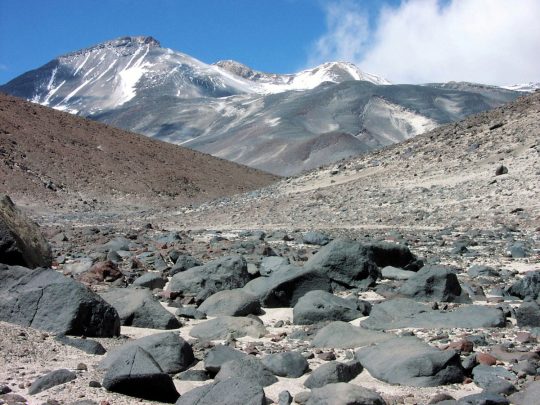 8,785 $
8,785 $Climb Aconcagua + Ojos Del Salado
- Height (m)
- 6893, 6957
- Duration
- 22 days
- Difficulty
- Moderate
- Continent
- South America
- Children
- From 14 years old
- Accomodation
- There are tents
-
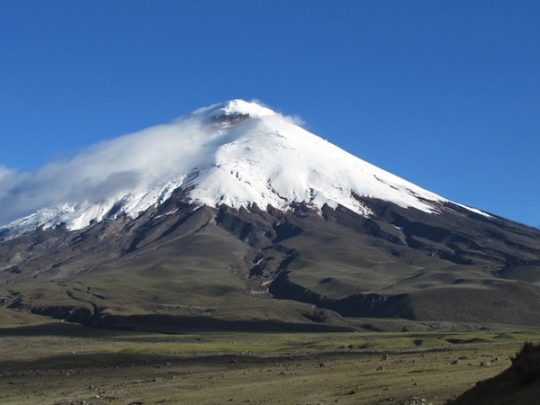 3,900 $
3,900 $Climb Chimborazo and Cotopaxi
- Height (m)
- 5897, 6384
- Duration
- 11 days
- Difficulty
- Moderate
- Continent
- South America
- Children
- From 14 years old
- Accomodation
- Hotels only
-
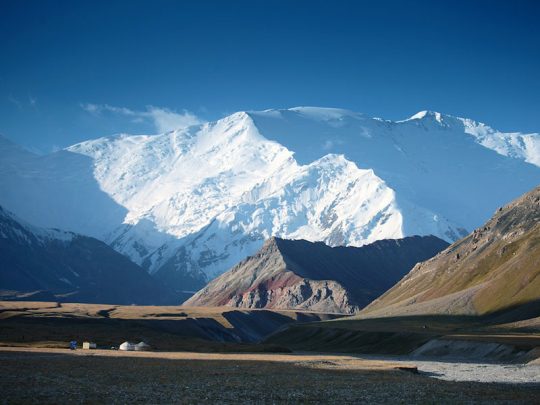 3,200 $
3,200 $Climb Lenin peak
-
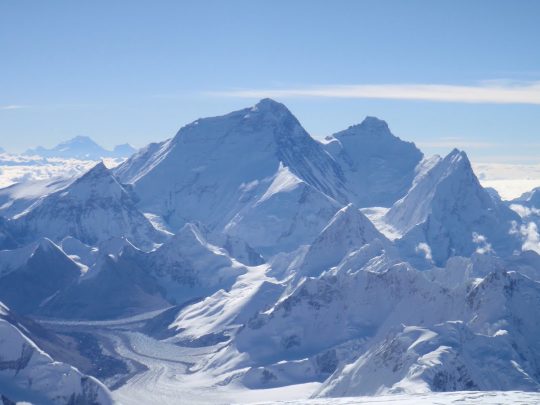 6,000 $
6,000 $Climb Muztagh Ata
- Height (m)
- 7546
- Duration
- 22, 26 days
- Difficulty
- Above average
- Continent
- Asia
- Children
- No
- Accomodation
- There are tents